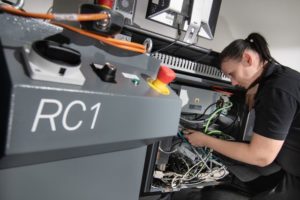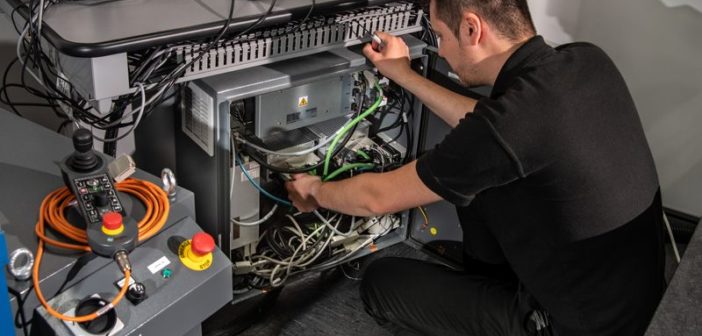In the previous blog of this series, we explored what you can expect from a Hexagon Manufacturing Intelligence pre-calibration service. In this blog, I want to examine the importance of an upgrade or retrofit for coordinate measuring machine (CMM) revitalisation.
I’ve sometimes encountered understandable scepticism about the value of upgrading or retrofitting a CMM.
Some customers have said to me “Our CMM works fine, Hexagon looks after it, and it keeps us going. Why should we upgrade or retrofit?”
This is a valid point. CMMs are built to last. They have solid granite beds, steel frames and there is very little wear and tear because the bridge moves on air bearings. They still move fast and give results that the customer is generally happy with, so why change?
But here’s the issue: even when the CMM seems to be operating fine, we need to take a longer-term view. It’s true that the frame is robust and supportable, but continuous advancements in CMM software and electronics mean that critical components have a shorter lifespan.
Manufacturing productivity demands a more proactive philosophy than “if it isn’t broke, don’t fix it”, which risks becoming “wait until it’s broke to fix it”. I encourage customers to ask themselves “how production critical is this machine?” and “how much does down time cost me when and if issues arise?” If the answers are “business critical” and “more than I’m comfortable with” then it’s definitely worth considering a retrofit or upgrade.
Two primary benefits of a retrofit/upgrade are:
1. Continued support from Hexagon for legacy equipment
2. Machine performance enhanced with the latest software and electronic development
So, what is potentially involved in a CMM retrofit or upgrade?
PC and PC peripherals will certainly be assessed by the service provider. PCs should ideally be replaced on a three-year cycle based on operatingsystem updates and electronic component obsolescence within the computer. Updating software ensures that users have access to the latest features that can enable a range of performance improvements, from more user-friendly interfaces to faster measurement routine creation. Updated software also includes training to bring operators up-to-speed.
During a retrofit, the original controller is replaced. While the unit itself is quite robust, the electronic components within the controller and wiring are subject to enhancements within the electronics industry, and production of parts such as circuit boards may have ceased. Proactively retrofitting an aging controller is a good way of avoiding costly downtime.
 Hexagon’s RC Line of retrofit controllers (RC1, RC241 and RC4K) act as a direct replacement for legacy controllers on both Hexagon and non-Hexagon CMMs. Using R-TUNE technology, the controllers automatically compute any CMM parameters so the machine is only down for the briefest time possible. These controllers are designed as modular systems, with the capability for expansion and development in line with future technological changes within the electronics industry.
Hexagon’s RC Line of retrofit controllers (RC1, RC241 and RC4K) act as a direct replacement for legacy controllers on both Hexagon and non-Hexagon CMMs. Using R-TUNE technology, the controllers automatically compute any CMM parameters so the machine is only down for the briefest time possible. These controllers are designed as modular systems, with the capability for expansion and development in line with future technological changes within the electronics industry.
Furthermore, retrofitting with the RC Line can also increase measurement and application flexibility. The line’s compatibility with all Hexagon sensors and tool changers means the CMM can be transformed into a multisensor machine capable of a range of contact and optical measurement.
A retrofit or upgrade could also involve a range of other machine adjustments to improve CMM performance, including rewiring, and replacement of motors, drives and measuring scales.
A major benefit of these services is continued support offered by Hexagon’s service team. Our global network of engineers, together with a full portfolio of readily available spare and replacement parts, ensures that your CMM is in safe hands during and after it has been updated.
In the next blog of this series, we’ll meet Richard Newhouse of Status metrology who will explain how to build future flexibility in CMM retrofits.














